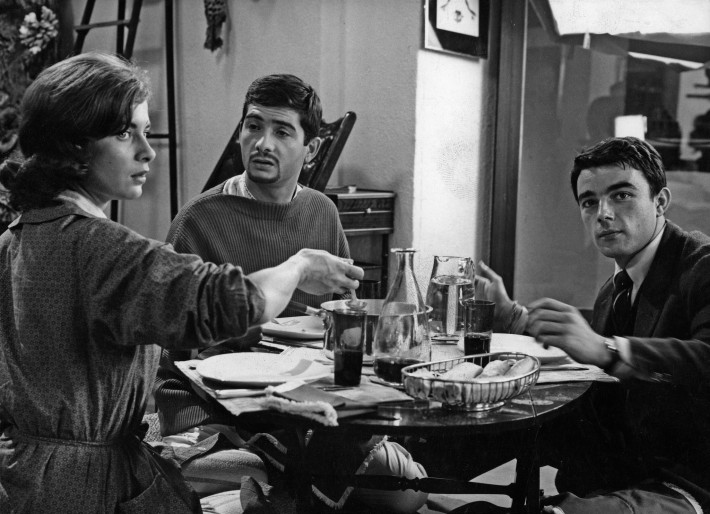Claude Chabrol double

Indeed, aside from the excellent performances by the male leads and Bernadette Lafont and Juliette Mayniel as their respective love interests in the two films, what really impresses here is the rigour and maturity to Chabrol’s direction. Indeed, in the lovingly detailed two-part documentary about the making of these films (which is split across the two discs) Charbol explains that, for him, every cut and movement of the camera has to be justified in terms of the story. The films bear this dictum out.
Aside from this excellent documentary, which leaves you in no doubt of the importance of these films, and Chabrol’s place in the pantheon, both the DVD and the Blu-Ray offer theatrical trailers, and a detailed booklet with interviews and production stills. However, perhaps the most instructive extras are a pair of short films, both taken from multi-director portmanteau features he took part in later in his career. (The confidence Chabrol exhibits in Le Beau Serge is all the more remarkable given that he, unlike his New Wave comrades Truffaut, Godard and Rohmer, did not test himself by making a short film before embarking on his debut feature). Le Beau Serge is packaged with ‘Avarice’, Chabrol’s contribution to a 1962 French film in which seven directors illustrated the one of the Deadly Sins. Les Cousins includes ‘The Man Who Sold the Eiffel Tower’, taken from an international multi-director film, The World’s Most Beautiful Frauds (1964), which features Catherine Deneuve and Jean-Pierre Cassel. While neither work is particularly substantial, both are very droll reminders of Chabrol’s often overlooked gift for comedy, and the fact that he was always more than just a director of thrillers.
The quality of the extras and the discs confirm that the Masters of Cinema series can rival America’s Criterion Collection for quality
The quality of the extras and the discs confirm that the Masters of Cinema series can rival America’s Criterion Collection for quality. The films, the shorts, and even the trailers are presented here in pristine new restorations from Gaumont, which bring out the best in Henri Dacaë’s superb black and white cinematography. The subtitles are thankfully optional throughout. These are essential releases which all cineastes will want to own and which begin to make up for the rather lacklustre treatment of Chabrol’s back catalogue on DVD and Blu-Ray so far.
Dr Brian Hoyle
 Learning on Screen
Learning on Screen